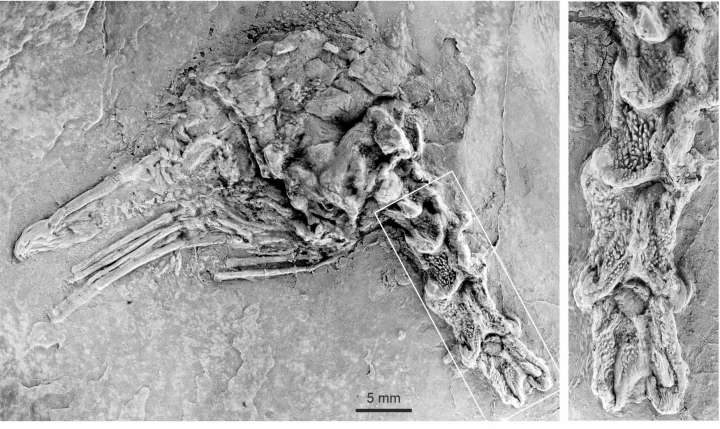Bats of the Oceans: Dolphins Already Used Narrow-band Sound Waves for Orientation Five Million Years Ago
Long-snouted dolphins took advantage of echolocation when colonizing new habitats
Senckenberg researcher Dr. Rachel Racicot and her former student Joyce Sanks from Vanderbilt University examined the inner ear of the extinct dolphin genus Parapontoporia. In their study, published in the journal “The Anatomical Record,” they show that the toothed whales had already developed specialized high-frequency hearing in the Miocene. The mammals also colonized rivers, which links them to today’s rare and endangered river dolphins. Investigating the sensory systems of toothed whales can help to understand the influence of habitat on their hearing and the evolutionary dynamics of marine mammals.
The return of cetaceans from land to the water around 50 million years ago in the early Eocene marks one of the most pivotal periods in the evolution of mammals. As a result of this change of habitat, whales, dolphins, and porpoises acquired a number of adaptations, including the relocation of their nostrils to the top of their heads and the development of a streamlined body. “The echolocation used by the animals also developed quite early in their evolutionary history. The animals emit a sound wave that bounces off an object and returns an echo, which provides information about the distance and size of the object. Today, all toothed whales use this natural sonar system,” explains Dr. Rachel Racicot from the Senckenberg Research Institute and Natural History Museum in Frankfurt, and she continues, “Echolocation is a logical hunting and communication strategy, especially in the sea, where sound travels five times faster than in the air, while at the same time visibility is often impaired.”
Racicot and her former student Joyce Sanks from Vanderbilt University in the USA examined the inner ear of three specimens of the now extinct dolphin genus Parapontoporia from the collections of the San Diego Museum of Natural History, using high-resolution X-ray CT scans. With the help of 3D models, they were able to prove that the mammals already possessed narrow-band high-frequency hearing during the Miocene, around 5.3 million years ago.
“What is particularly exciting is that these dolphins changed their habitat once again and left the marine environment to colonize rivers,” says Racicot. Even today, there are still a few dolphins living in rivers. All six species are currently very rare and threatened with extinction. As a relative of the Chinese river dolphin (Lipotes vexillifer), which was last seen alive in 2002, Parapontoporia offers insights into the transition from a marine habitat to a freshwater environment. “We assume that selective pressure and/or ecological advantages caused this early and widespread evolution of echolocation in the dolphins we studied. River systems are spatially complex habitats in which this form of orientation and communication was probably advantageous for the long-snouted dolphins,” explains Racicot, and she offers an outlook: “Further research into the sensory systems of toothed whales can be an important tool to study the influence of habitat on cetacean hearing and to understand the evolutionary dynamics of marine mammals.”




